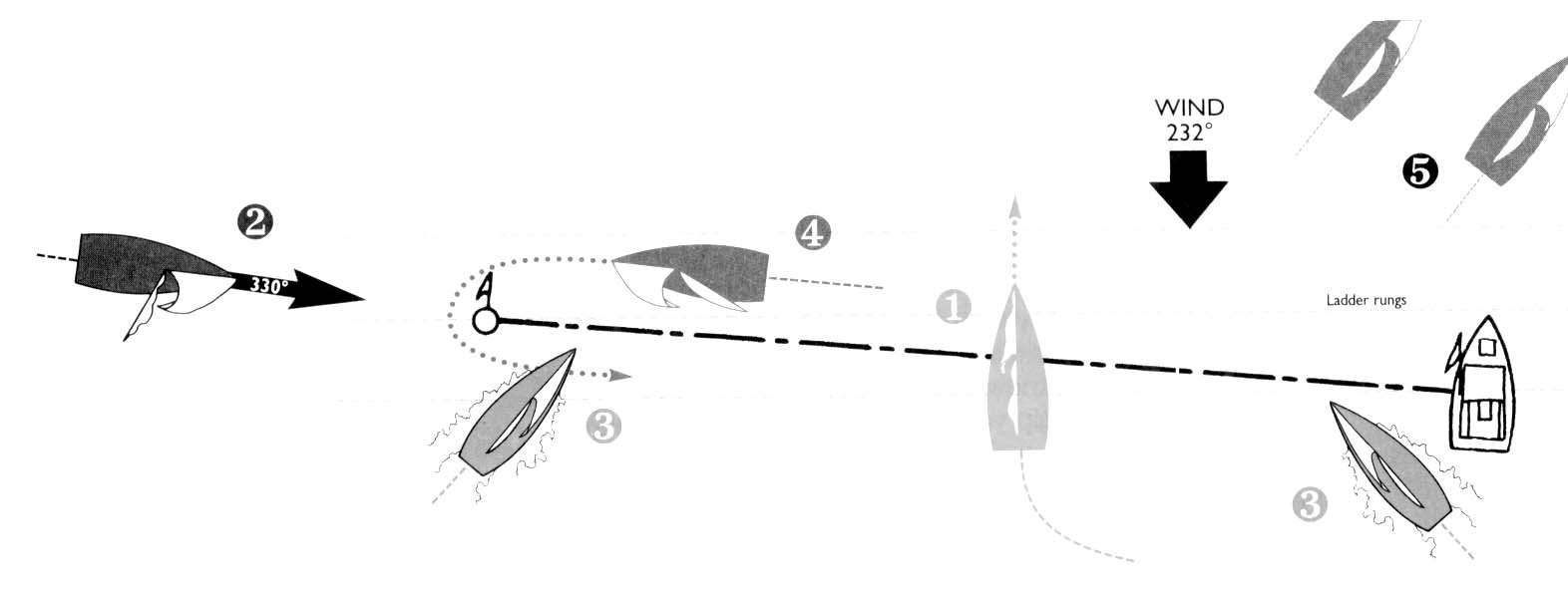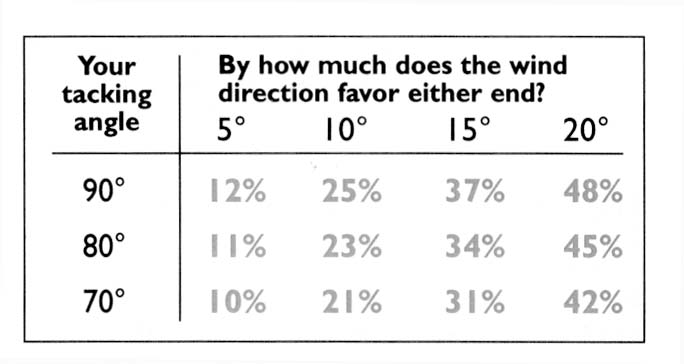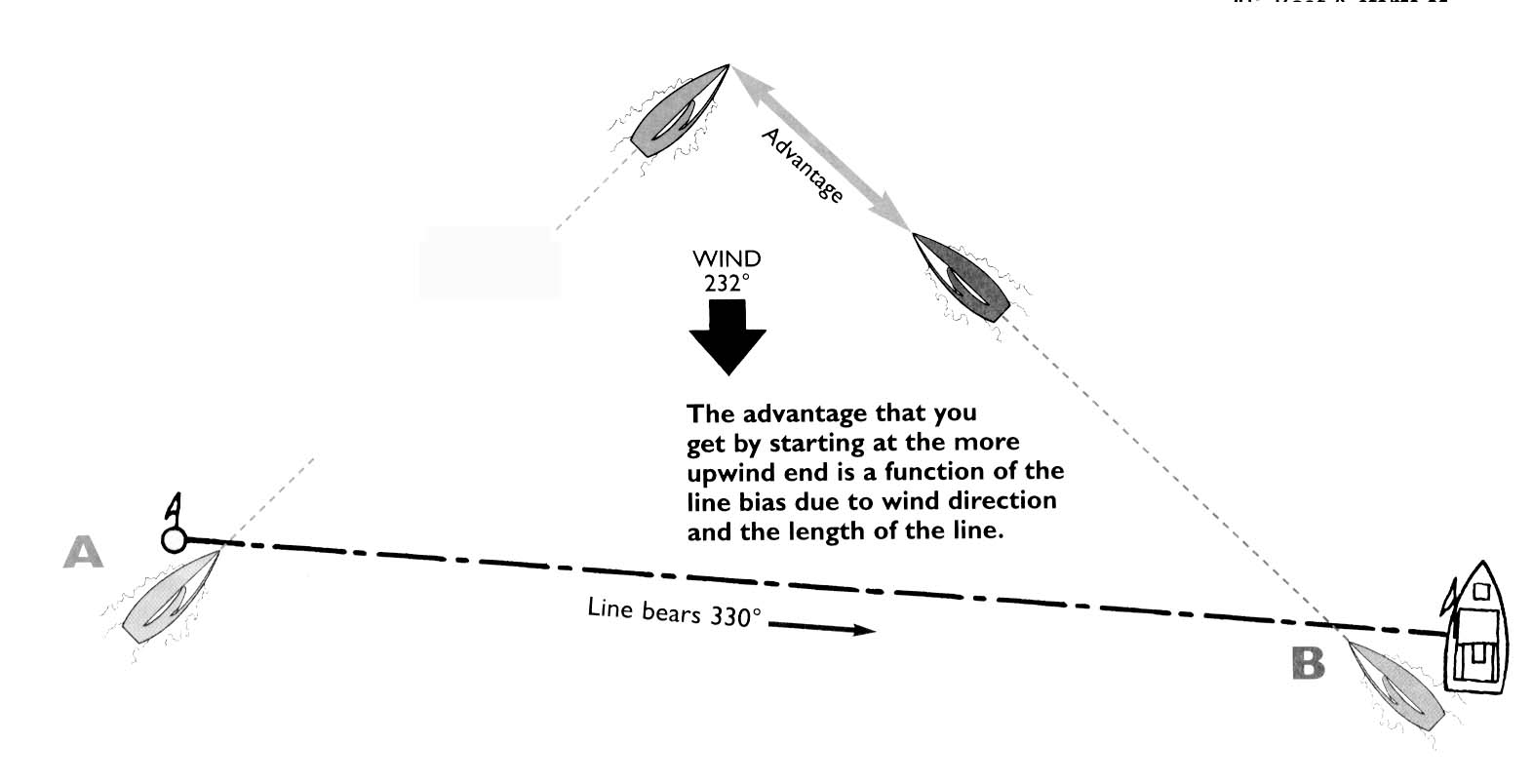
Six Ways to Figure Out Which End is More Upwind
by David Dellenbaugh
 |
1) Shoot head to wind in the middle of the line. This is the most popular method. When your boom in in the middle of the boat, look to see which end of the line is closer to where your bow is pointing. Thatís the more upwind end. Remember to shoot head to wind from starboard tack so you maintain the right of way.
2) Use your compass to figure out the geometry. This is the most accurate method (if you have a compass). Aim your bow from one end of the line to the other (itís easier from the pin), and get a line bearing. Compare this to your median compass reading for the wind direction. With geometry, you can figure out which end is more upwind and by how much.
3) Find a buddy and test from both ends. This is good for longer lines when itís not clear which end is better. At a pre-arranged time, have your friend start at the RC boat on starboard while you start at the pin end on port. Sail closehauled until one boat crosses the other. This will show you which end is more upwind and by how much.
4) Run the line on both tacks and compare sail trim. Start at the RC boat and sail toward the pin. Trim your sails perfectly for that wind angle. Then jibe around the pin, leaving your sails trimmed exactly the same, and head for the RC boat. If your sails are now luffing, the RC boat is more upwind; if your sails are overtrimmed, itís the pin end.
5) Watch the classes that start before you. If you are not in the first start, sit just outside either end and watch the class(es) before you. As the fleet comes off the line, look to see which end seems better.
6) Watch the angles of boats on each tack. This is my favorite method. Before the start, I watch the boats that are sailing closehauled near the starting line. I look to see which ones are sailing more perpendicular to the line. If itís the boats on port, I know the pin end is more upwind, and vice versa.
Why start near the upwind end?
 |
This chart shows how much you can gain by starting near the upwind end of the starting line. To use this chart, you must know three things: 1) how much the wind direction favors either end of the line; 2) the tacking angle of your boat in the existing conditions; and 3) the approximate length of the starting line.
The colored % numbers show the rough amount of sailing distance that you will gain by starting at the upwind end compared to a boat that starts at the downwind end. These gains are expressed as a percentage of the line length.
For example: The tacking angle for a fleet of one-designs in light air is about 90 degrees. Boat A starts at the leeward end, which is ďfavoredĒ by 8 degrees (see diagram). Boat B starts at the committee boat end. If they both sail until A crosses ahead of B, A should the ahead by about 20% of the length of the starting line. If the starting line is approximately 30 boatlengths long, this means A will cross B by about 5 lengths. Thatís how much of a bonus A gets by starting near the upwind end. If the line is longer or if one end is upwind by more than 8 degrees, A will get a bigger bonus and B will be farther behind. Thatís a pretty good reason for starting somewhere near the end thatís more upwind!
 |
Dave is a two-time Americaís Cup veteran who publishes the newsletter Speed & Smarts. For a subscription call: 800-356-2200.